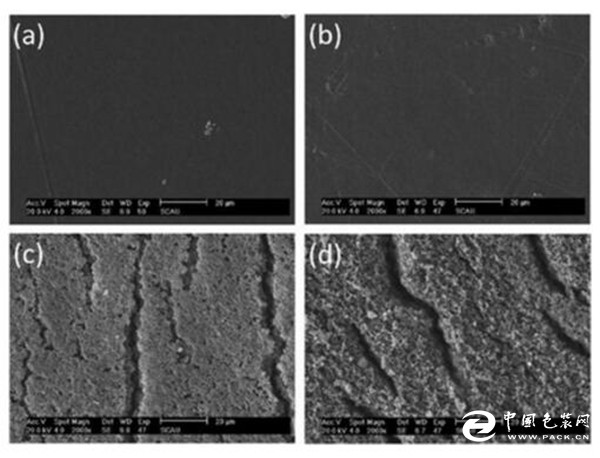[China Packaging Network News] Researchers at South China Agricultural University in Guangzhou, China, have studied an effective, environmentally friendly and biodegradable polyolefin material to help solve the problem of difficult recovery of agricultural polyolefins.
Polyolefins are widely used in agricultural applications (for example, for greenhouses, cover or tunnel membranes). In fact, it is reported that 80% of plastic covers are made of polyolefins (eg polyethylene). Although this material promotes good harvesting, most polyolefin plastic film processing is problematic.
The researchers used PMMA surface-modified TiO2 nanoparticles as additives to promote the degradation of polyethylene. They found that composite films made of LDPE and these modified nanoparticles showed greater weight loss after UV irradiation than did pure LDPE samples. In addition, they observed the viable fungal growth of their radiant composite samples, which could lead to further biodegradation of the membrane.
It has previously been demonstrated that the oxidative biodegradation of polyethylene (eg, abiotic and biodegradable) is a promising approach to solve this plastic contamination problem. In this method, pro-oxidant additives (eg, titanium dioxide, TiO2, nanoparticles) are introduced into the polyethylene matrix to accelerate the rate of abiotic degradation. The former oxidant reacts with water and oxygen under UV irradiation to form hydroxyl groups, which can then initiate the degradation of the polyethylene. As a result, smaller hydrophilic molecular fragments can be further biodegraded in the presence of microorganisms such as bacteria, fungi, and algae. However, the entire process is usually very slow and limited by the formation of nanoparticle agglomerates.

SEM images of the low density polyethylene (LDPE) films (a) and (b) after UV irradiation for 415 hours. Images of irradiated LDPE composite films containing (c) titanium dioxide (TiO2) nanoparticles and (d) poly(methyl methacrylate) modified TiO2 nanoparticles are also shown (©SPEPRO, 10.2417/spepro.006909)
Researchers have investigated the use of poly(methyl methacrylate), PMMA as a graft on the surface of TiO2 nanoparticles to accelerate the polar ethylene photo-oxidation process. This hydrophilic coating promotes water so that more water can be used for photooxidation. In addition, the researchers unexpectedly discovered that the hydrophilic modification of such TiO2 nanoparticles improves their dispersibility and compatibility within the polyethylene matrix (thus further enhancing photocatalytic oxidation).
For the experiments, samples of pure low density polyethylene (LDPE) and LDPE composites containing TiO2 nanoparticles (TiO2/LDPE) or PMMA modified TiO2 nanoparticles (TiO2-g-PMMA/LDPE) were used. Researchers performed photocatalytic oxidation of the membrane in ambient light in a UV light box. Several morphological features can be observed from scanning electron microscope (SEM) images, indicating that the oxidation of TiO2-g-PMMA/LDPE samples is much higher than that of pure LDPE and TiO2/LDPE films (after 415 hours of UV irradiation). In particular, the researchers found that the surface of the pure LDPE film was very smooth and invariable by irradiation. In contrast, the structure of the composite membrane is essentially destroyed by the irradiation process.
Good Night Pants/trousers Sanitary Napkins
Disposable Period Panty,Disposable Sanitary Panties,Disposable Menstrual Panties,Disposable Female Panties With Pad
Shandong Tianzige International Trade Co., Ltd , https://www.tianzigedipers.com